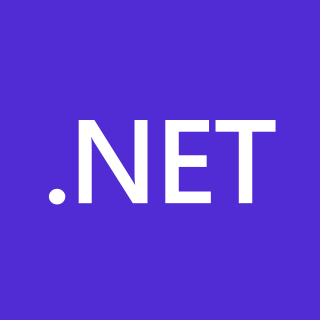| Date | Version | Remarks | New ASP.NET related features |
|---|
| January 16, 2002 | Old version, no longer maintained: 1.0 | First version
released together with Visual Studio .NET | - Object-oriented Web application development supporting inheritance, polymorphism and other standard OOP features
- Developers are no longer forced to use Server.CreateObject(...), so early-binding and type safety are possible.
- Based on Windows programming; the developer can make use of DLL class libraries and other features of the Web server to build more robust applications that do more than simply rendering HTML (e.g., exception handling)
|
| April 24, 2003 | Old version, no longer maintained: 1.1 | released together with Windows Server 2003
released together with Visual Studio .NET 2003 | - Mobile controls
- Automatic input validation
|
| November 7, 2005 | Old version, no longer maintained: 2.0 | codename Whidbey
released together with Visual Studio 2005 and Visual Web Developer Express
and SQL Server 2005 | - New data controls (GridView, FormView, DetailsView)
- New technique for declarative data access (SqlDataSource, ObjectDataSource, XmlDataSource controls)
- Navigation controls
- Master pages
- Login controls
- Themes
- Skins
- Web parts
- Personalization services
- Full pre-compilation
- New localization technique
- Support for 64-bit processors
- Provider class model
|
| November 21, 2006 | Old version, no longer maintained: 3.0 | Released with Windows Vista | |
| November 19, 2007 | Old version, no longer maintained: 3.5 | Released with Visual Studio 2008 and Windows Server 2008 | - New data controls (ListView, DataPager)
- ASP.NET AJAX included as part of the framework
- Support for HTTP pipelining and syndication feeds.
- WCF support for RSS, JSON, POX and Partial Trust
- All the .NET Framework 3.5 changes, like LINQ etc.
|
| August 11, 2008 | Old version, no longer maintained: 3.5 Service Pack 1 | Released with Visual Studio 2008 Service Pack 1 | - Incorporation of ASP.NET Dynamic Data
- Support for controlling browser history in an ASP.NET AJAX application
- Ability to combine multiple JavaScript files into one file for more efficient downloading
- New namespaces System.Web.Abstractions and System.Web.Routing
|
| April 12, 2010 | Old version, no longer maintained: 4.0 | Released with Visual Studio 2010 Parallel extensions and other .NET Framework 4 features | The two new properties added in the Page class are MetaKeyword and MetaDescription. |
| August 15, 2012 | Old version, no longer maintained: 4.5 | Released with Visual Studio 2012 and Windows Server 2012 for Windows 8 Parallel extensions and other .NET Framework 4.5 features | |
| October 17, 2013 | Old version, no longer maintained: 4.5.1 | Released with Visual Studio 2013 [8] for Windows Server 2012 R2 and Windows 8.1 | |
| May 5, 2014 [9] | Older version, yet still maintained: 4.5.2 | | - Higher reliability HTTP header inspection and modification methods
- New way to schedule background asynchronous worker tasks
|
| July 20, 2015 [9] | Older version, yet still maintained: 4.6 | Released [10] with Visual Studio 2015 [11] and EF 7 Previews for Windows Server 2016 and Windows 10 | - HTTP/2 support when running on Windows 10
- More async task-returning APIs
|
| November 30, 2015 [9] | Older version, yet still maintained: 4.6.1 | | |
| August 2, 2016 [9] | Older version, yet still maintained: 4.6.2 | | - Improved async support (output-cache and session providers)
|
| April 11, 2017 [9] | Older version, yet still maintained: 4.7 | Included in the Windows 10 Creators Update [12] | - operating system support for TLS protocols
|
| October 17, 2017 [9] | Older version, yet still maintained: 4.7.1 | Included in the Windows 10 Fall Creators Update. [13] | - Improved accessibility
- Value tuple types serialization
- SHA-2 support
|
| April 30, 2018 [9] | Older version, yet still maintained: 4.7.2 | |
| August 09, 2022 [9] | Current stable version:4.8.1 | Released [14] | - JIT and NGEN Improvements
- Updated ZLib
- Reducing FIPS Impact on Cryptography
- Accessibility Enhancements for WinForms
- Service Behavior Enhancements for WCF
- High DPI Enhancements, UIAutomation Improvements for WPF
|
| November 18, 2015 | Old version, no longer maintained: 5 RC1 | This version was later separated from ASP.NET and brought into a new project called ASP.NET Core, whose versioning started at 1.0. [15] | An entirely new project with different development tenets and goals |
Legend: Old version Older version, still maintained Latest version Latest preview version Future release |





